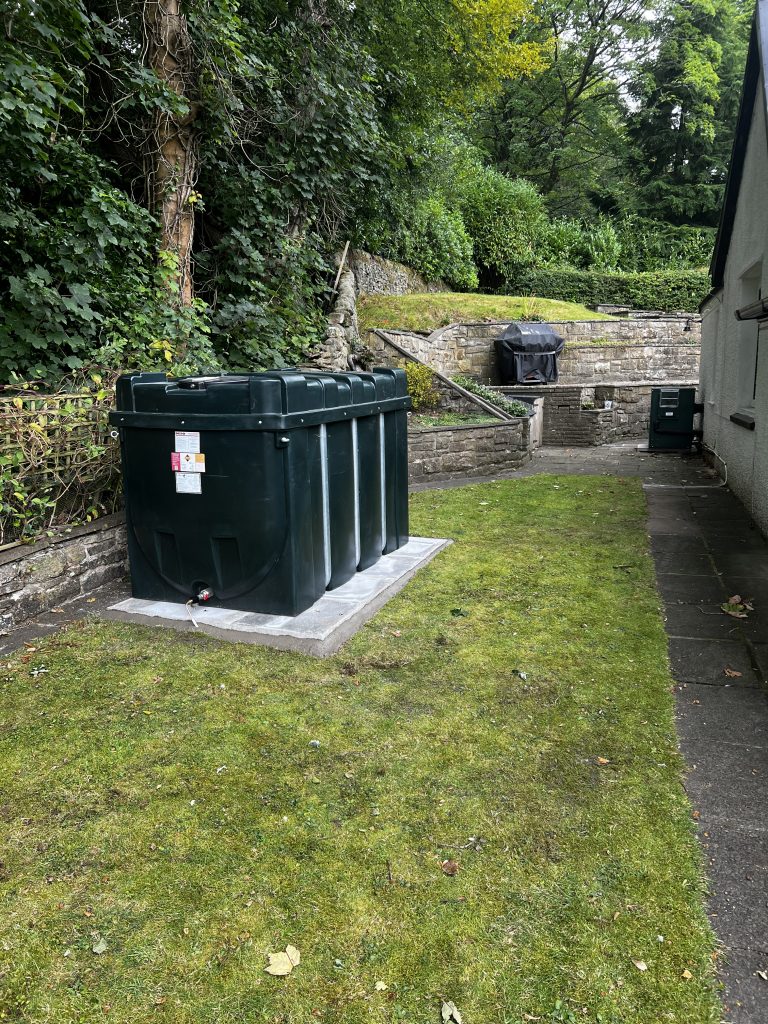
We provide a comprehensive oil tank installation service to the requirements of OFTEC registration.
We complete all aspects of tank replacement, including relocation of tanks, to the requirements of OFTEC registration.

We recommend you run regular checks over your oil tank, as well as the surrounding pipework, to ensure that the main walls of the tank are intact, undamaged, and that it is not at risk of developing a leak.
Pay particular attention to single-skinned tanks that are more than 10 years old as they can be more vulnerable to damage, as well as wear and tear.
It would also be a good idea to consider replacing your oil tank once it is no longer covered by the manufacturer’s guarantee.
Anyone who stores oil at their home or business must comply with regulations and these vary across the UK; you will need to check with your Local Authority as to what rules will apply to your property.
If you want to increase the size of your tank, or install a tank for the first time, you may also need planning permission, unless:
For more information go to: https://www.gov.uk/oil-storage-regulations-and-safety
You can buy either single-skinned or double-skinned oil tanks.
Single-skinned tanks have one outer wall; they are relatively low cost and can be practical in certain situations.
A bunded or double-skinned tank has two walls, an outer one and an inner one. These two layers increase the security of your tank, making it more resilient to damage.
If the outer wall is breached, then your oil should still be secure inside the inner wall.
If the inner wall fails then the oil will simply fill the gap (“bund”) between the two walls, meaning it is less likely to pollute the surrounding area, or seep into ground water.
An oil tank is not a fit-and-forget product. According to UKIFDA, there are on average 10 reported incidents involving oil tank leaks per day!
You should get your tank and boiler serviced every 12 months by an OFTEC-certified installer.
It should also be emptied and cleaned every 3-5 years, depending on how large it is and how it’s used.
Between services, keep an eye out for signs of the tank skin blanching or rusting, as well as damage and cracks, and act immediately if you smell oil, or if your oil level gauge drops suddenly.
Check the pipework for leaks and ensure tank gauges and any monitoring equipment are working correctly. Further advice is available here.
If you’re not sure, contact your installer for a second opinion.
Looking for a reliable and experienced team to handle your oil tank replacement? Look no further. We are trusted professionals with years of experience and a commitment to quality and service. We're your go-to choice for all your oil tank replacement needs. Contact us today to learn more about our service
© 2025 All Rights Reserved.
